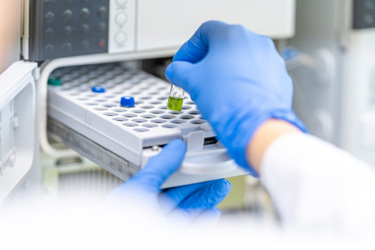Industry Leaders On Analytical Method Development

By Tyler Menichiello, Chief Editor, Bioprocess Online

Analytics are inextricably bound to product quality and manufacturing control, and in this highly regulated world of therapeutic development, the importance of reliable and reproducible analytical methods cannot be overstated. The same characterization and potency assays that guide early development will eventually become critical components of a product’s IND submission and form the basis of future comparability testing. As such, poor analytical methods can derail product development and in the worst case, present approvability issues. However, so can the poor transfer of good analytical methods. Method transfers are an inevitable part of ATMP development that can make or break a candidate’s potential at every step.

Ensure Consistency And Reproducibility

One example is ensuring the use of commercially available reagents, which can help maintain consistency as you move a product through development and CMO partners, according to Cox. “Whoever’s going to be making your product, they need to be able to get the exact same reagents,” she says.
Along this same vein, Krause emphasizes the importance of choosing your platform technology and instrumentation wisely. This is especially true if you’re planning to license and supply a product globally, as technological differences across regions may cause complications.
Start With The Analytical Target Profile

“The sooner you can nail down the specificity of the assay, the sooner you know that that’s actually going to be a suitable assay to move forward with,” Janssen says.
These quality attributes should be captured in a method’s analytical target profile (ATP), a living document that describes the purpose of an analytical method, what it measures, and its relevant performance criteria (which may change throughout development). While the documentation and submission of an ATP is optional (per the FDA’s recently finalized guidance on analytical procedure development, ICH Q14), it forms the basis of analytical method development and can be useful in monitoring and improving a method throughout a product’s life cycle. Therefore, Krause recommends starting with the ATP.
It's also important to address any deficiencies in your analytics as early as possible, Janssen says. Even though you can reasonably get through preclinical and even Phase 1 trials with these deficiencies, they do not get easier to solve. “If anything, it becomes more difficult and more problematic,” he says. “I have actually seen a near crash and burn at the FDA because of an analytical method that didn’t have its wrinkles ironed out in early-phase development.”
Like most aspects of drug development, the more proactive you can be, the better. As we’ve heard before, it’s too easy to fall into the trap of planning to figure things out later. “Begin with the end in mind,” Janssen says in reference to a chapter from the popular book, The 7 Habits Of Highly Effective People. “The more one can look down and see where you’re trying to get to and plan your analytics around that, it actually makes everything go better,” he says.
Developing Potency Assays
Perhaps unsurprisingly, nearly 60% of our audience said that potency assays were the most challenging to develop. This was not a surprise to our panelists, who shared their thoughts on ways to manage the daunting task of potency assay development. One bright side is that, as critically important as they are, your potency assays don’t need to be perfected in Phase 1, says Cox. “That is the time you identify a lot of different tests that you might consider for your long-term potency,” she says. This is the time to try different tests on for size and really get a sense of what tests should comprise your potency panel.
“I would recommend that all of those you’re considering for your potency be validated,” she continues, even though they don’t have to be validated in Phase 1. “If you have those validated, you can be sure that your results are going to be accurate.” Then, once you move into Phase 2, you can select which test or tests should come together to form the potency panel, and rest assured that they’ll already be validated.
Capturing Nuance In A Method Transfer
Towards the end of the hour, our panelists shared their thoughts on ways to ensure the smooth and effective transfer of analytical methods during a tech transfer. One of the best things to do, if possible, is to have the individuals responsible for performing the assay — from both the sending and the receiving end — working on it together in the same lab, says Janssen. This is the best way to ensure that the nuances of the method, the distinct habits and differences in scientists’ laboratory conduct, get accurately transferred between sites. These nuances don’t tend to make their way into the SOP, he says, but they can be implicit parts of the process.
Sending someone to the receiving lab can also help illuminate any differences between facilities or QC workflow and how these may affect method transfer. Cox attests to the importance of having someone on-site during a transfer. “Sometimes [a method] might need to be tweaked,” she says. “The workflow in this lab may not be the same as the workflow in the other lab, so you have to make sure you’re mimicking exactly what goes on between the two.”
Understandably, it’s not always possible to send your scientists off to train at different sites, but that’s where technology can help. “We do a lot with video,” says Krause. “We take videos of the actual execution, and we share those videos if we cannot do actual on-site training.” Videos or live video calls — anything with visuals — is a solid choice in lieu of sending SMEs to a site.
Virtual reality is another useful tool that can help with method transfers, assuming an SME isn’t able to travel to the receiving lab. At Moffitt, they use virtual reality glasses, “which helps for going back and forth,” Cox says. “Usually, we have someone come here, we do the tech transfer, then we’ll do the virtual glasses for the next few testing runs to make sure that we’re doing it correctly.”
Audience Questions And Answers
During our live events, we encourage the audience to submit their questions in writing (live) for our panelists to answer during the hour. Unfortunately, we don’t always get around to answering every single one. Luckily, Cox was kind enough to provide written responses to some of these unanswered questions, which I’ve included below. As always, I implore you to watch the full live event recording on Bioprocess Online (under the “Listen & Watch” tab), where you can see our panelists respond to more audience questions and hear their thoughts on designing and transferring analytical methods.
Identity assays for cell therapy products based on stem cells are very challenging; what alternatives would you recommend when there isn’t a solid identity assay?
Cox: If flow markers or surrogates are available, that is the most efficient. However, the colony forming cell (CFC) assay can provide stem cell identification, but it is difficult to validate and make robust.
Do methods need to be validated for Phase 3 as a regulatory requirement?
Cox: Phase 3 requires validation per cGMP.
What are the specific safety tests that are required?
Cox: That depends on the type of product. Sterility/bioburden, mycoplasma, and endotoxin are basic for autologous, non-CAR-Ts. Safety testing is expanded to include vector copy number (VCN) and replication competent retrovirus (RCR) with genetically modified products, and further expanded with allogeneic to infectious disease markers.
For allogeneic therapies, which potency assays do you think are the best outside of cytotoxicity?
Cox: Potency is very product-specific. Based on the suspected action of the product, cytokine production or decreased expression of a specific target may be used in place of or with cytotoxicity.
With flow cytometry as the assay most commonly used, what are the panelists’ thoughts on controlling analyst bias in gating?
Cox: Providing a very defined batch processing record that designates the criteria for gate setting, as well as a second independent tech review followed by Quality review before result release, eliminates a significant amount of bias.
